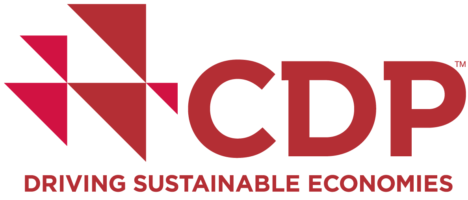

Environment
Cement Industry at Risk Unless Sustainability Improves
Cement companies across the world need to up their sustainability game according to a new report. The report, which analyses the world’s largest cement companies, finds that the industry’s worst performers face a possible earnings hit of 114% (before interest and tax). The report suggests a great deal of innovation is needed to improve the efficiency of the industry.
The report from CDP – voted no. 1 climate change research provider in 2015 by institutional investors – finds that the majority of the companies’ forward-looking emissions reductions targets are set to expire within the next few years. With the Paris Agreement driving towards net zero emissions in mid-century, cement companies have a historic opportunity to set targets that can future-proof their business. The cement industry is responsible for 5% of global emissions, so will need to deploy highly innovative product and process technologies, and new business models, in order to meet the Paris Agreement objectives.
Tarek Soliman, Senior Analyst, Investor Research at CDP said: “This is the first piece of major research to break down how major players in the cement industry are meeting the challenge of reducing emissions in line with the science called for by the Paris Agreement. Cement will be a crucial building block as the Paris Agreement is put into effect, as it accounts for 5% of the world’s man-made emissions. The results couldn’t be clearer for companies and investors: a tipping point for cement companies is not far away.
“As carbon-related regulatory measures inevitably tighten and the carbon price signal strengthens, investors will expect both strategic and rapid changes from cement companies, including better use of currently available options as well as investment in longer–term ones, whether this be in areas such as low-carbon product development or the deployment of carbon capture, use and storage.”
Other findings from the report include:
- The report recommends that in order to be consistent with the Paris Agreement cement companies must increase their use of alternative fuel sources, implement thermal energy efficiency measures and use decarbonized substitute materials to a much greater degree.
- Only three companies in the report have outlined plans for reducing their emissions in line with global carbon budgets (science-based targets) and other companies’ plans are not ambitious enough. The industry is required to take more aggressive action post-2025 and company targets need to reflect this.
- More than 50% of cement facilities are currently located in areas of water stress and the report finds water scarcity to be a potential issue for the sector. In particular, it poses a significant risk to two Indian cement companies, Ultratech and Shree Cement, as well as other companies operating in the country where water shortages exacerbated by climate change may restrict growth.
- The worst performers tend to be those not supportive of climate legislation, and tightening regulation is likely to drive industry change. For example, a strengthening of the EU emissions trading system (EU ETS) is currently being negotiated which affects at least eight of the cement companies in this report. Even if free allowances remain and benefit the industry in the short-term, a stronger price signal is clearly likely in the mid-term, as well as deeper emissions reductions from the sector. Those who remain behind the curve will face significant financial impacts.
- Recent industry consolidation has the potential to improve company carbon performance, with CDP’s league table leaders merging (LafargeHolcim) with more potential to invest in industry leading performance improvements as a result. 2016 will see Heidelberg Cement acquire laggard Italcementi, meaning the latter could benefit from the former’s more carbon efficient practices.
- Anhui Conch Cement (China), Siam Cement (Thailand), Dangote Cement (Nigeria) and Vulcan Materials (USA), which collectively represent over US$60 billion in market capitalization, did not respond to CDP’s 2015 climate change questionnaire and are therefore not included in this report. Investors should ask these companies why they are not providing sufficient transparency on their carbon emissions.
Bernard Mathieu, Head of Sustainable Development at LafargeHolcim, said:“LafargeHolcim is proud to hold the lead position in CDP’s league table, which underlines our responsibility to influence carbon performance in our sector. Our low carbon strategy, as outlined in the LafargeHolcim 2030 Plan, is aligned with the decisions made in Paris at COP 21. We are committed to continue to innovate in our products and processes and to remain the most CO2-efficient global business in our sector.”
View the executive summary of the report here.


 Environment10 months ago
Environment10 months agoAre Polymer Banknotes: an Eco-Friendly Trend or a Groundswell?

 Environment11 months ago
Environment11 months agoEco-Friendly Home Improvements: Top 7 Upgrades for 2025

 Features9 months ago
Features9 months agoEco-Friendly Cryptocurrencies: Sustainable Investment Choices

 Features10 months ago
Features10 months agoEco-Friendly Crypto Traders Must Find the Right Exchange





























